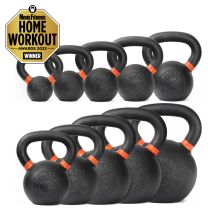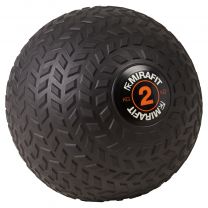Best Lower Body Workout For Injury Prevention
Best Lower Body Workout For Injury Prevention

We invited triathlete, personal trainer and physiotherapist Becky Hair into the Mirafit studio for her best lower body exercises for injury prevention.
As a physiotherapist I see a lot of athletes coming to me with overuse injuries, which could have been prevented. It’s frustrating because I can see there is a lot of wasted potential disappearing because of silly mistakes. We must learn that more miles and more sessions do not mean better performances. Better quality sessions, and excellent recovery is what it’s all about.
We all want to be the best athletes we can be, but this often comes at the expense of social time and living life. Getting that balance right is hard but is something that you must play around with. In an age where ‘self-love’ and ‘mindfulness’ are buzz words used daily to remind us to have a rest, it is so important to remember that the body can only build strength, power and endurance once it has restored itself. So, you must let this happen.
Best exercises for injury prevention
Prehab is all about injury prevention and strength training plays a big part in this.
As a personal trainer, I have done a lot of strength and conditioning work in the past and know the sorts of exercises that are going to really help.
Just recently, I was lucky enough to spend some time at Mirafit HQ. I discovered Mirafit when I originally filmed some videos for them on behalf of Specialized Bikes UK. I was astounded at how great their kit was and really wanted to get involved.
In this video, I cover a wide range of lower body exercises, including some ‘activation’ exercises that you can do before your gym session.
The idea is that you can quickly highlight your body’s asymmetries and then they may help you work on your weaknesses. For example, we will naturally have one leg that’s stronger than the other, or one side which we favour in terms of balance. As we exercise, we need to be as symmetrical as possible, and getting these basic exercises right can really help when we are lifting weights or running flat out!
The exercises
• Single leg squats (10 reps each leg)
• Goblet squats (20 reps)
• Elevated split squats (10 reps each leg)
• Calf raises (20 reps each leg)
• Twist lunges (10 reps each leg)
• Woodchopper lunges (10 reps each leg)
• Arabesques (5-8 reps each leg)
• Box jumps (5-10 reps each leg)
• Hip Dips (10-15 reps each leg)
You can do these exercises as a warm up or cycle them to create your own circuit – whatever works for you and your training goals.
In the video, I use
• A pair of Hex Dumbbells
• A Medicine Ball
Use a weight that’s challenging but not so much of a strain that you can’t do the full amount of reps.
How to speed up muscle recovery

Learn your body. Be aware of your last few weeks of training, how work has been, how much sleep and good nutrition you’ve been getting. Know what is normal for you – physiologically and mentally. And communicate this to your support networks and coaches.
Make sure you have your rest scheduled into your plan! This is a basic commodity. Even when I used to train 15 hours a week, I would still have a full rest day once a week. Many athletes don’t respect this, they’ll push more and more and end up over-trained and burnt out. If you want to enjoy the sport for a long time, you need to mentally reset yourself too.
Use your rest day to put 20-minutes aside to reflect on goals, performances and how you’ll address weaknesses. Nobody is perfect, there are always things we can work on.
Find other activities to occupy you on your rest days – other hobbies, creative vocations, even just listening to your favourite music. Remember that you need something for you, something outside of sport and work. If you get injured, what do you have to distract you? Filling your life with exercise is great, but if it gets taken away, you need something to fill the void. And this can lead to a low mood and consequently over doing it again once you come back to exercise.
Between sessions you can also apply some really specific recovery tools
• Sports massage - there’s no set prescription for this, but regular maintenance massage does help flush everything out, and is especially useful before and after a race.
• Yoga - I love the Down Dog App!
• Good hydration straight after a session - find what works for you – water and electrolytes, or milk is also fantastic!
• Nutrition - getting something into you straight after a session is really key. Something else I always notice too is people under-fuelling for early morning sessions – don’t! Get something small even if it’s super early and you’re time limited – a banana, a smoothie, just something to kick start your metabolism is vital.
• Compression clothing - I’ve recently used some compression leggings from Zone 3, and they’re incredible! They’re super comfy and perfect for both spinning or running. They will also help increase venous return and improve the DOMS for the coming days!
• Plan in rest weeks - a lot of athletes overlook this too – make sure you build for 3-4 weeks, then drop the intensity for a week to aid recovery.
• Pilates - try and find a decent instructor, and to get the right kit, you can find Pilates Sets here. Or try out our Pilates Balls.
For more content, follow us on Instagram, YouTube, TikTok, and on our official Mirafit Facebook page.
Enter your email to signup to our newsletter
Tags: Equipment > Dumbbells ; Equipment > Kettlebells ; Equipment > Medicine Balls & Slam Balls ; Equipment > Plyo Jump Box ; Exercise Type > Conditioning ; Exercise Type > Yoga & Pilates ; Misc > Workout








